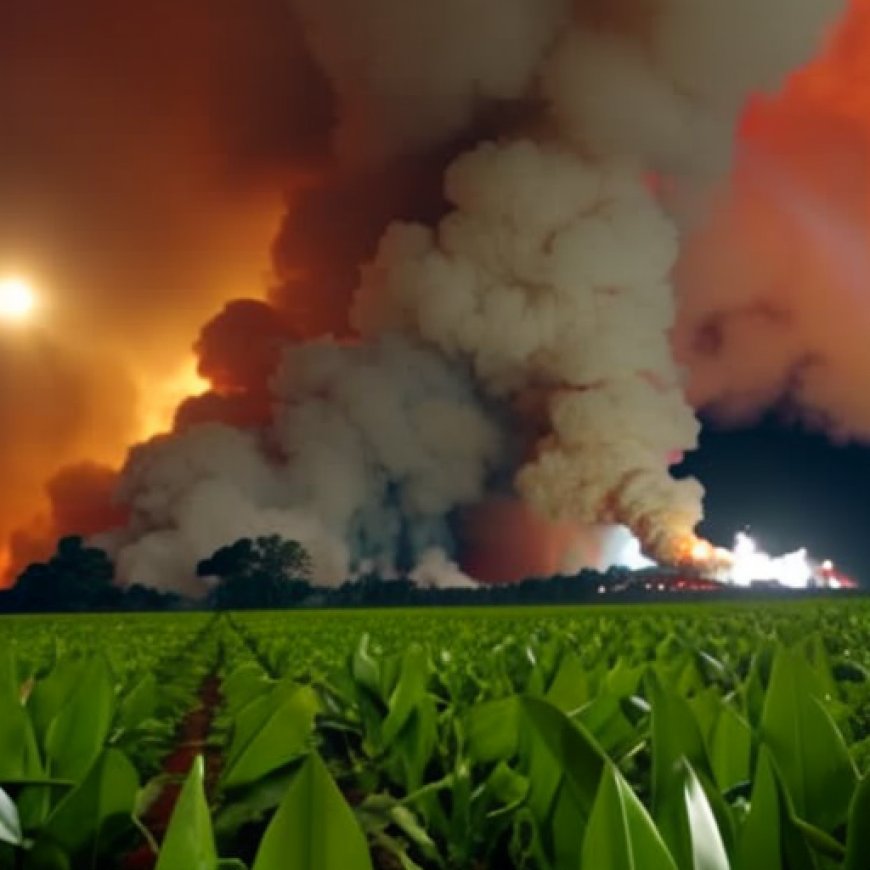El Niño leads to more fires and toxic air pollution in Indonesia
El Niño leads to more fires and toxic air pollution in Indonesia Mongabay.com


Indonesia Faces Increasing Land and Forest Fires Amid El Niño
JAKARTA — Parts of Indonesia are covered with toxic air pollutants from burning lands and forests as this year’s fire season is intensifying amid the El Niño weather phenomenon, which brings drier conditions.
Increasing Hotspots
- Official data show a fourfold increase in hotspots up to September, compared with the same period last year.
- Most of the hotspots occurred in 10 provinces that are historically prone to fires — North Sumatra, Riau, Jambi, South Sumatra, West Kalimantan, Central Kalimantan, South Kalimantan, East Kalimantan, North Kalimantan and Papua.
Health Impacts
- The burning has emitted toxic smog, making it dangerous for people to breathe the air in major cities, such as Palembang, the capital of South Sumatra.
- Air quality in Palembang had been worsening recently, with PM2.5 readings reaching 322 µg/m3 on Sept. 15 — 21 times higher than what the World Health Organization considers safe.
Burning Peat
- The issue of fire is particularly critical in peatlands, carbon-rich ecosystems that emit large amounts of CO2 when they are burned and thus contribute substantially to Indonesia’s greenhouse gas emissions.
- Fire monitoring found 14,437 hotspots in peat landscapes in August, with fires occurring in 271 peat hydrological areas in 89 districts and cities and 19 provinces.
Scale of Fires
- Data from the environment ministry show that 90,000 hectares of land have burned so far in this year’s fire season.
- An analysis found 262,000 hectares of areas that have apparently burned from January to August 2023.
Repeat Offenders
- Some of the burning occurs in areas that had previously been burned, indicating that the fires are reoccurring.
- The repeat burning of concessions shouldn’t happen if the government strictly enforces the law and evaluates existing concessions.
SDGs, Targets, and Indicators
1. Which SDGs are addressed or connected to the issues highlighted in the article?
- SDG 3: Good Health and Well-being
- SDG 13: Climate Action
- SDG 15: Life on Land
2. What specific targets under those SDGs can be identified based on the article’s content?
- SDG 3.9: By 2030, substantially reduce the number of deaths and illnesses from hazardous chemicals and air, water, and soil pollution and contamination.
- SDG 13.2: Integrate climate change measures into national policies, strategies, and planning.
- SDG 15.2: By 2020, promote the implementation of sustainable management of all types of forests, halt deforestation, restore degraded forests, and substantially increase afforestation and reforestation globally.
3. Are there any indicators mentioned or implied in the article that can be used to measure progress towards the identified targets?
- Number of hotspots detected (indicator for SDG 13.2)
- Air quality readings for PM2.5 (indicator for SDG 3.9)
- Number of hectares burned (indicator for SDG 15.2)
Table: SDGs, Targets, and Indicators
| SDGs | Targets | Indicators |
|---|---|---|
| SDG 3: Good Health and Well-being | 3.9: By 2030, substantially reduce the number of deaths and illnesses from hazardous chemicals and air, water, and soil pollution and contamination. | Air quality readings for PM2.5 |
| SDG 13: Climate Action | 13.2: Integrate climate change measures into national policies, strategies, and planning. | Number of hotspots detected |
| SDG 15: Life on Land | 15.2: By 2020, promote the implementation of sustainable management of all types of forests, halt deforestation, restore degraded forests, and substantially increase afforestation and reforestation globally. | Number of hectares burned |
Based on the article, the issues highlighted are connected to SDGs 3, 13, and 15. The specific targets identified are SDG 3.9, SDG 13.2, and SDG 15.2. The indicators mentioned in the article that can be used to measure progress towards these targets are air quality readings for PM2.5, number of hotspots detected, and number of hectares burned.
Behold! This splendid article springs forth from the wellspring of knowledge, shaped by a wondrous proprietary AI technology that delved into a vast ocean of data, illuminating the path towards the Sustainable Development Goals. Remember that all rights are reserved by SDG Investors LLC, empowering us to champion progress together.
Source: news.mongabay.com

Join us, as fellow seekers of change, on a transformative journey at https://sdgtalks.ai/welcome, where you can become a member and actively contribute to shaping a brighter future.







